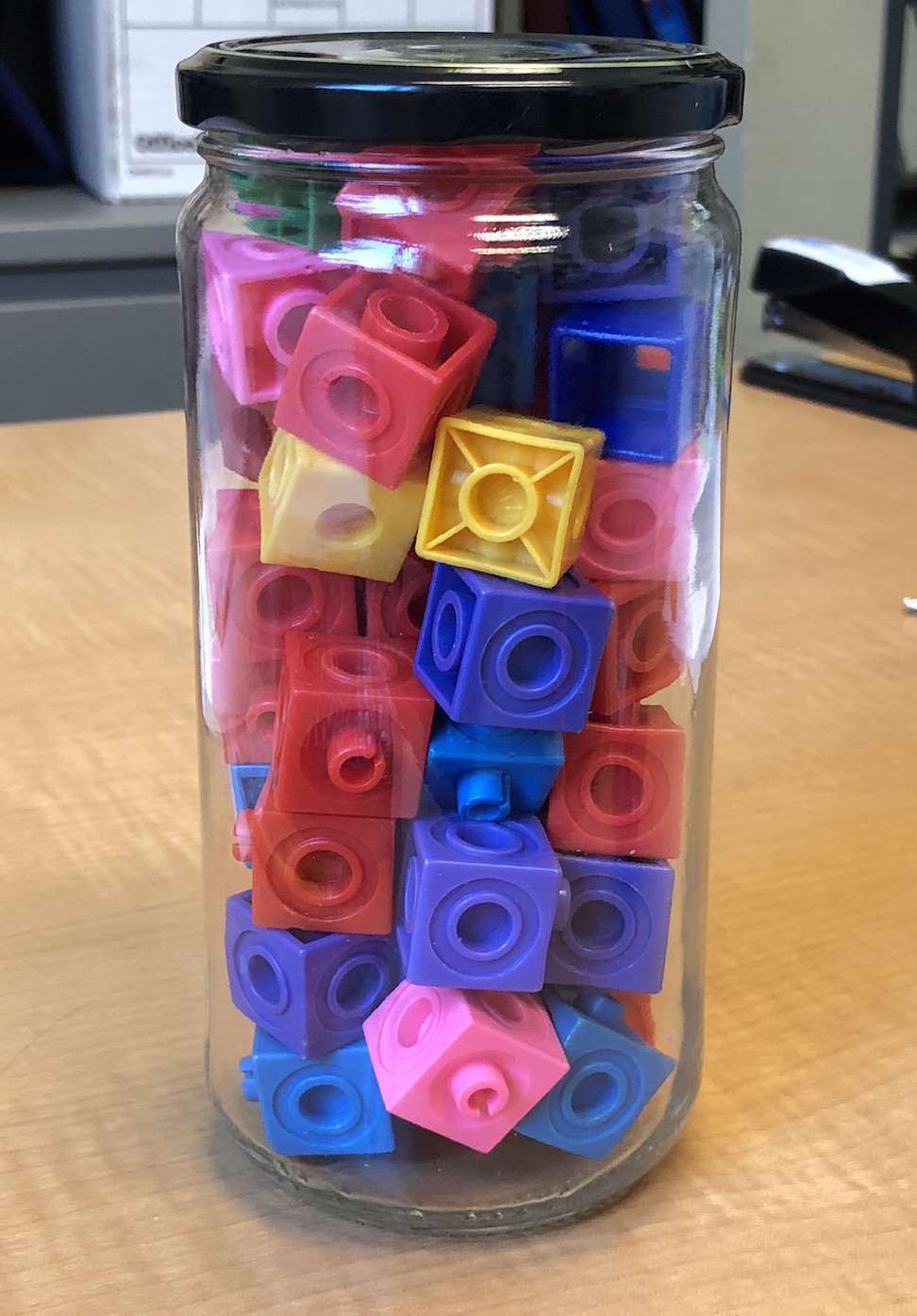Lesson 13
Absolute Value Functions (Part 1)
Lesson Narrative
This lesson enables students to experience the idea of a distance function before they learn about such functions more formally. The function comes up naturally in the context of computing absolute errors, so the lesson is built around the idea of guessing a target number and examining how far the guesses are from it.
Advanced preparation is required for this lesson. See Required Preparation.
Students guess the number of objects in a container, such as the one shown here. When given the actual number of items (47 snap cubes in the jar in this picture), they calculate the absolute guessing errors of everyone's guesses.
After plotting the absolute guessing errors as a function of the guesses, students notice that the points on the scatter plot form a V shape above the horizontal axis.
Students consider possible reasons for this and think about whether this behavior is generalizable to other guessing cases, regardless of the target number being guessed. They use their observations to make sense of absolute value functions in the next lesson.

Technology isn't required for this lesson but consider making it available, as there are opportunities for students to choose to use appropriate technology to solve problems (MP5), or for the class to process the collected data more efficiently.
The blackline master for the warm-up activity, which includes two tables and two blank coordinate planes, will be used throughout the lesson.
Learning Goals
Teacher Facing
- Analyze and describe (orally and in writing) features of a scatter plot that relates guesses and absolute errors.
- Generalize (using words or equations) the relationship between guesses and absolute errors.
- Given a set of numerical guesses and a target number, calculate absolute errors and create a scatter plot of the data.
Student Facing
- Let’s make some guesses and see how good they are.
Required Materials
Required Preparation
Before the day of the lesson:
- Display a jar that contains about 30-50 small objects, or display a picture of such a jar, such as the one in the Activity Narrative.
- Ask students to guess the number of objects in the jar. Collect their guesses and compile them in Table A and Table B in the blackline master of the warm-up activity.
- Add a scale to each axis on the blank coordinate planes in the blackline master. The scales should make it possible for students to plot all the data points (the guesses and absolute guessing errors).
- Each student will need the data set and at least one coordinate plane for the activities in the lesson.
If using graphing or statistical technology to calculate absolute guessing errors and to create scatter plots of the data, prepare access to the technology.
Learning Targets
Student Facing
- Given a set of numerical guesses and a target number, I can calculate absolute errors and create a scatter plot of the data.
- I can analyze and describe features of a scatter plot that shows absolute error data.
- I can describe the general relationship between guesses and absolute errors using words or equations.
CCSS Standards
Glossary Entries
-
absolute value
The absolute value of a number is its distance from 0 on the number line.
Print Formatted Materials
For access, consult one of our IM Certified Partners.
Additional Resources
| Google Slides | For access, consult one of our IM Certified Partners. |
|
| PowerPoint Slides | For access, consult one of our IM Certified Partners. |